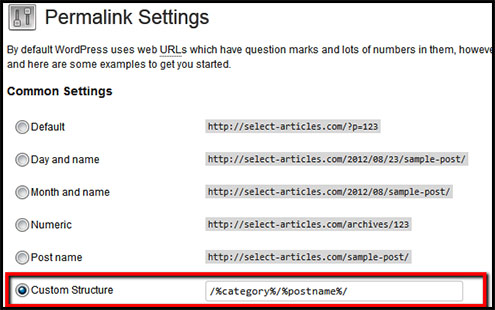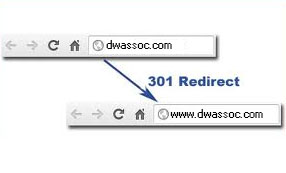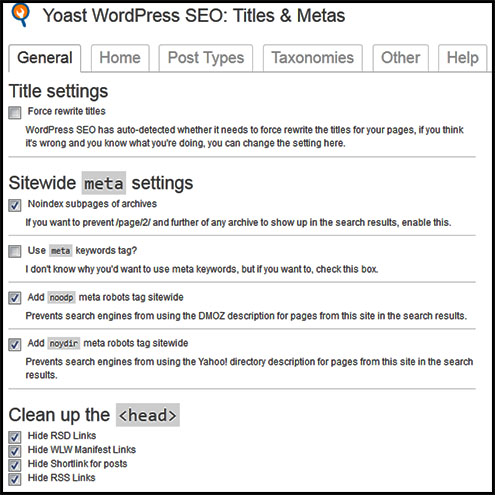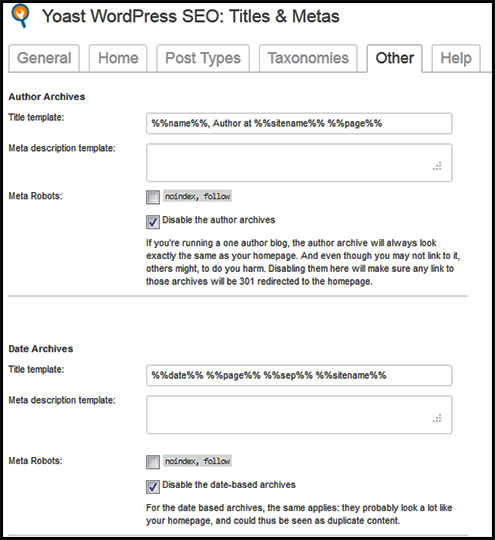
This plugin not only replaces the All-in-one-SEO-Pack plugin, but also the XML sitemaps plugin. It also allows you to edit and easily make changes to your .htaccess file from within WordPress and much more.
When you first access your plugin in your WordPress blog (Settings>>SEO) you will be prompted to take a tour of this plugin. I recommend you do this to get oriented to what its capabilities are. Yoast has an excellent plugin tutorial on their site. It is much more in depth than this blog posting and a good read if you have specific questions.
- URL Permalink Structure: (Settings>>Permalinks). I like to use URLs that are set-up as /category/postname. Set to a custom structure: /%category%/%postname%/
- WWW vs. Non-www: Set your site to appear as www or non-www This is done under the WordPress General Settings (Settings>>General). You should also go into Google Webmaster tools set your preferred URL. (Configuration>>Settings).
XML Sitemaps: Enable XML sitemaps to automatically generate XML sitemaps.
Titles & Metas: Most of the tabs are filled with preset templates that you can override. I made changes to the General and Other tabs. These are the settings for the general tab.
Duplicate Content: One problem that occurs with WordPress right out of the box is that each posting has upwards of 5 copies of it that is available for indexing by the search engines. You fix that with the “Other” tab on Titles & Metas. There is one type of archive that is noindex,follow by default as well in the WordPress SEO plugin: the search result pages. WordPress SEO automatically nofollows all your login and registration links,. If your blog is a one author blog, or you don’t think you need author archives, use WordPress SEO to disable the author archives.
That’s it. Many of the SEO functions happen by activating the plugin. There is a lot to this plugin and I would appreciate feedback from other users.





